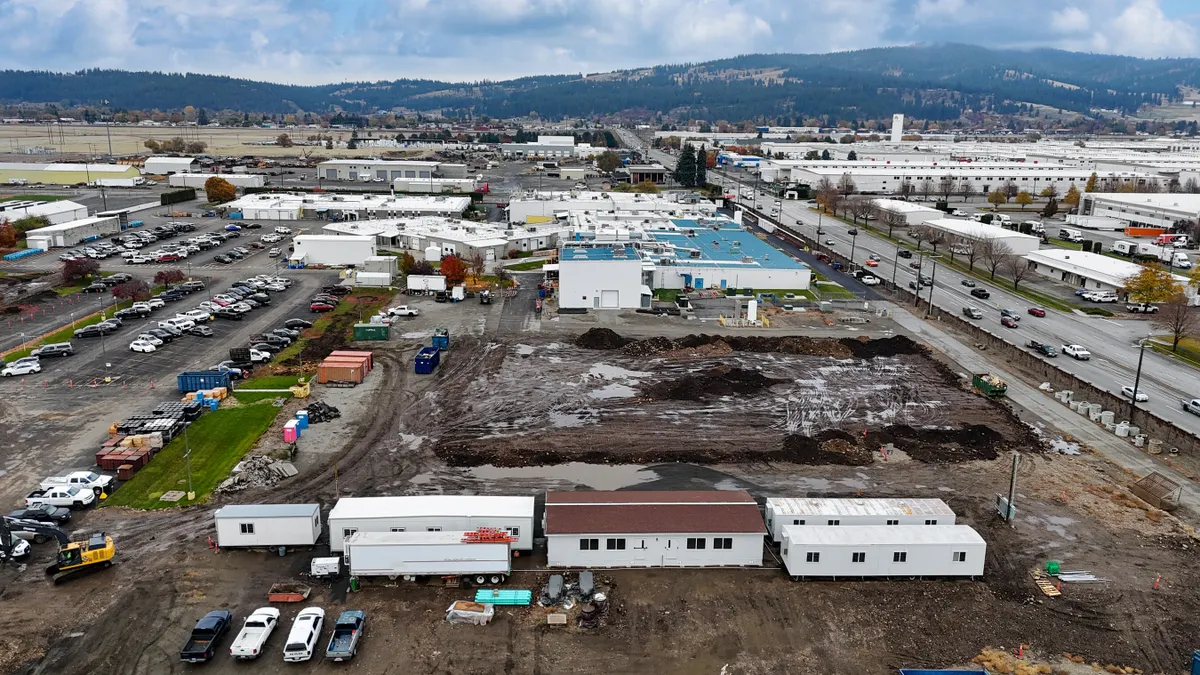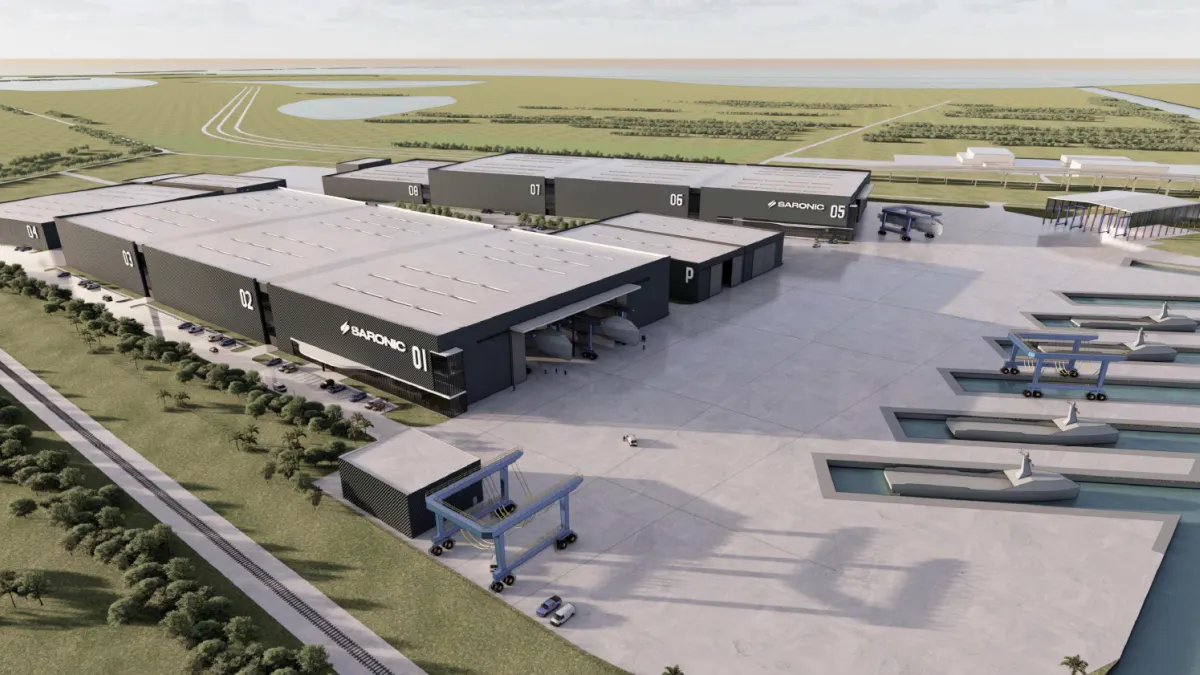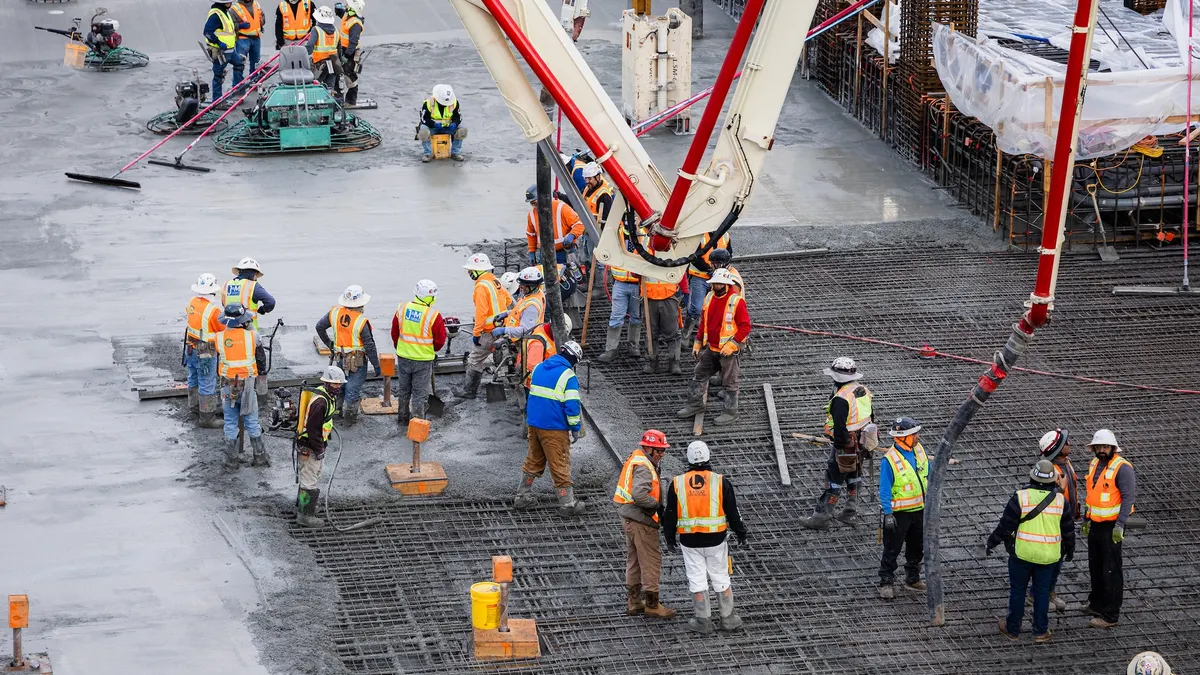This feature is part of a series that takes an in-depth look at risk in construction. To view other posts in the series, check out the spotlight page.
What do Olympic runners have to do with keeping workers safe on a jobsite? A lot, said Craig Atkinson, vice president of communications for The Walsh Group, a contracting and design-build firm. Runners are much faster than they were 100 years ago, he noted, because of advances in sneaker technology and because elite athletes have a mindset of continuous improvement, always analyzing and acting on their performance data.
“Technology, culture and data: Those are also the things that change the game in [jobsite] safety,” Atkinson said during a session at Procore's recent Groundbreak Construction Conference in Austin, Texas.
Atkinson, along with Paul Ziegler, vice president of safety for contractor Allan Myers, and Michael Flynn, corporate safety director for Barnard Construction, told several hundred industry professionals that construction firms need to be “data smart” in order to continue to decrease jobsite risks.
During another Groundbreak session, Lisa Capicik, safety director for Alabama-based general contractor Brasfield & Gorrie, said unsafe work environments damage contractors’ reputations. “If the job doesn’t go well [safety wise], it’s hard to get people to stay on that job. How we respond to problems on the job impacts the job.”
Data analytics are key
Between 2009 and 2013, Allan Myers began engaging deeper with its data to better understand the firm’s safety incidents, Ziegler said, to decrease total reported incidents.
In 2015, Chicago-based Walsh became more effective at collecting safety data and discovered that “the data looked worse, but we just got honest,” Atkinson said.
Among other things, Walsh implemented Safety-Reports.com, a third-party mobile safety app, to get a higher level of fidelity in the field. “This changed the game about a year ago for us,” Atkinson said. “For the first time, we could collect data across the company and could look at how safe we were during regular work and rework.”
The data showed that a worker was 10 times more likely to get hurt during rework than during the project. That’s because the project could be behind schedule, resulting in low morale, Atkinson said. “It made sense intuitively, but now we had data."
Changing the corporate culture
Besides utilizing robust data, Atkinson said Walsh knew that, to drive down safety incidents, it had to change its company culture. But with up to 20,000 employees at peak times, that’s hard to do, he said. “Culture is the prime way you can improve safety.”
Contractors have to stop pointing the finger at others, such as subcontractors, for safety issues. “In the past it was always, 'blame someone else,'” Ziegler said. But Allan Myers changed its approach. “We went from a police officer to more of a coach” — and it’s helping, he said.
Flynn, of Montana-based Barnard Construction, agreed. “It’s about the ‘what,’ not the ‘who.’”
Construction firms need to reward a collaborative approach to safety rather than singling out workers who are doing things wrong. “Point out when people do things the right way," Atkinson said. "It’s about touching the heart and mind. We have the processes in place, but that will only improve us to a certain point. We have to get people of their own accord to do those things."
One thing Walsh did to boost workers’ commitment to safe jobsite practices was to place ‘No one gets hurt’ stickers on all hardhats. “We are monitoring the numbers, but we want everyone in the field to care about each other and their equipment, and then no one gets hurt,” Atkinson said.
Walsh also implemented the REAP (Review of Employee Actions and Performance) Program, which includes a dashboard that helps the firm make safety corrections quickly. Through the program, the company conducted 109,000 jobsite observations last year, which revealed the contractor was not “going deep enough” with its safety efforts, so it reorganized its training around a powerful app, the spokesman said.
In analyzing safety data, Walsh also saw that it had more safety issues with new employees. In response, it gave all new workers a blue hardhat to wear during their first 90 days on the job — “even new superintendents who have been in the industry a long time,” Atkinson said.
In addition, all workers have their names on their hardhats so that anyone can address them by name. “We’re doing a lot of training around emotional intelligence, how to relate to them,” he said.
Besides scouring data and other efforts, Allan Myers is using simulators to train workers to safely use equipment. But because superintendents don’t want to lose a person to a full day of training, the firm brings the simulators to the jobsites. Ziegler said the training has other benefits. “This also shows people we are there for them, caring about them and caring about their careers.”
During another conference session on safety, Hilarie Warren, course director of the Georgia Institute of Technology's OSHA Training Institute, said construction firms need “safety leaders” who are good listeners, humble, patient, trustworthy, honest and inspirational.
“Thirty years ago you just needed to know the [OSHA] rules and the contract,” she said. “Now [safety] is about having a heart and having relationships. “
Those relationships, Warren said, include partnerships with various groups, such as OSHA and local universities and colleges that can transfer data and knowledge. She noted that OSHA also has an on-site non-enforcement consultation program that’s free to contractors.
Zero safety incidents are possible, Flynn said: “As a company, we had zero for two years.”
“Every number is a person,” he added. “Don’t ever forget that.”





















